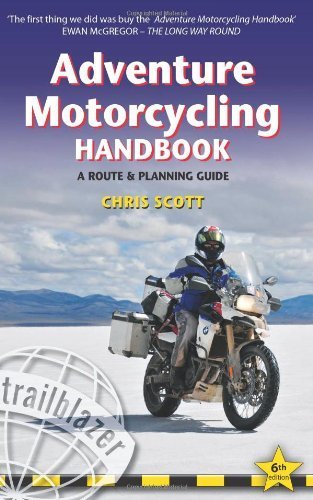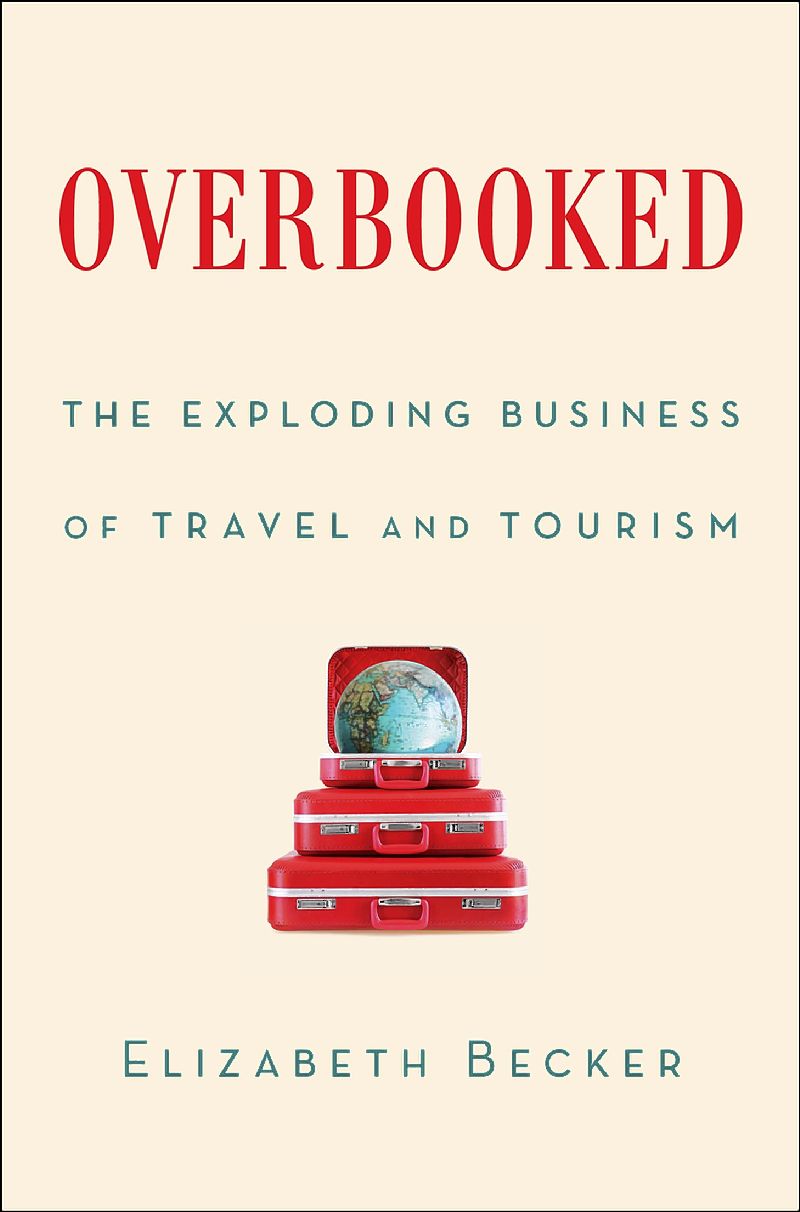
As I sat down to write this month’s selection of fun and forensic book reviews, George Zimmerman was found not guilty of murdering Trayvon Martin. The verdict sparked a handful of demonstrations across the United States as well as calls for federal investigation into the incident as a hate crime and a boycott of the state of Florida. It’s an odd coincidence since the theme this time around might well be described as the ethics of travel and travel writing, whether of guides or personal adventures.

The verdict should not have been a surprise to anyone, right or left, who bothered to read the law as written. The center does not hold. It is unlikely a more rigorous prosecution or a more impartial jury would have made a difference. And in the South anyone who isn’t a redneck or a good old boy is perceived of as a threat.
Some find it useful to sort prejudice into two categories: prejudice against visible minorities – most commonly race or gender – and prejudice against invisible minorities – most commonly religion or sexual preference. In my experience, no bigot is prejudiced against just one group, though curiously some bigots might have just one exception: nobody’s perfect.
And anyone who presumes that prejudice is strictly peculiar to the right has clearly never heard a committed Marxist complain about the liabilities of identity politics as practiced by “those people” as a distraction from collective action.
Of course, race and prejudice is and was at the heart of the incident and its aftermath, but if race is too uncomfortable an issue, and it may be for some, consider this: of the more than 30 states in the US that have stand-your-ground laws, more than two dozen specifically ban gay marriage. As Sir Arthur Conan Doyle’s Sherlock Holmes observed, “A coincidence! … The odds are enormous against its being coincidence. No figures could express them” (The Adventure of the Second Stain, 1904).
Don’t care about lesbian and gay men? The highest estimate of the total population just makes it to ten percent. No problem. How about women? The lowest estimate of the total population just tops fifty percent. In the past two years (2011 and 2012), 2044 “anti-women” bills in one form or another have been proposed in all 50 state legislatures, of which 165 have been passed. Of the more than 90 of those bills in some 24 states, close to 70 percent restrict access to abortion services. Three states have even proposed to make it legal to kill any doctor performing abortions. Less publicized are ‘attacks’ on divorce laws, rights of victims of domestic violence, and, of all things, the Girl Scouts (Guides).
Think none of this has anything to do with motorcyclists? Think again. The so-called North Carolina Motorcycle Abortion Bill put motorcyclists right in the crossfire. Briefly: in the middle of the legislative process, strict anti-abortion measures were inserted into a bill dedicated to motorcycle safety. Less than half North Carolina’s voters supported the anti-abortion measures, but some 80 percent objected to the process. In other words, quite a few anti-abortionists yelled foul.
The governor, Pat McCrory, had promised not to sign such anti-abortion legislation, but indicated he would sign the Motorcycle Abortion Bill. He also promised not to use such tricks to get any law past the public and the legislation, let alone those measures some might find objectionable. While breaking such promises is standard operating procedure across the political spectrum, breaking two such promises at once would take a perverse genius.
(Bearing in mind that the best way to become foolish is to try to predict the future, it is likely the anti-abortion legislation will become law, while motorcyclists – and motorcycle safety – will get the short end of the stick, if not the shaft.)
Of course, as a group, motorcyclists are an invisible minority. To ‘come out’, the motorcyclist has to either tell others about the interest or turn up somewhere with kit and bike. But no matter how spiffy, motorcyclists are seen as hairy bikers, members in good standing of outlaw gangs. The increased number of RUBs (Rich Urban Riders) and baby boomers among the ranks of motorcyclists has yet to make a dent in popular perception. When I tell certain people I review books for a motorcycle magazine, the reaction is generally a variation on “They can read?”
How potentially detrimental is that public perception? The somewhat conservative Pat Hahn notes in Motorcyclist’s Legal Handbook (2011) that “[w]ithout a permit, traveling with a loaded and/or accessible weapon is really asking for trouble. Even though you may be 100 percent legal in some jurisdictions, it can easily depend on how a law enforcement officer interprets the law or perceives his or her safety in your presence” (37).
Hahn is referring to concealed carry. His main point is how someone might perceive his or her safety in the presence of a biker. Given that a biker is already perceived of as negative and dilettante vigilantes are not exactly well-trained police officers, there is a very real chance of getting shot in such an encounter. And the Kevlar used in synthetic leathers is not the same weight as the Kevlar used in bulletproof vests.
The important question raised in terms of motorcycle travel is whether is it ethical to directly or indirectly encourage tourism to anyplace where the motorcyclist might get killed? It’s a very real one in the case of Florida, which coincidentally is pushing to make the state the prime destination for motorcycle tourism in the US. In addition to touting its near perfect riding weather and lack of mandatory helmet laws, Florida has been busy creating places to go and things to do for bikers. A new International Motorcycle Show will debut in October in Orlando timed to coincide with Biketoberfest in Daytona, which is just a short ride away (and I have even heard whispers that the Ace Cafe may be opening its first US branch in the area in 2014).
While headline performers and entertainers refusing to play in any state with a stand-your-ground law may help keep the issue from going away, there is some question how long that ‘boycott’ will last given that only between one third and one fourth of the states don’t have such laws or legal precedents. And a general boycott would be useless. An activist here in New York actually called such a boycott ‘ridiculous’ saying it would be punishing people who had little, if anything, to do with the matter.
Negotiating awkward local political situations like that is not news to adventure motorcycles travelers as Chris Scott notes many times directly and indirectly in his Adventure Motorcycling Handbook (2012) and Morocco Overland (2013), the latest revised editions (sixth and second respectively) of two of his more popular titles. Along with Ted Simon, Scott is responsible for inspiring at least two (if not three) generations of motorcycling adventurers.
The Handbook, usually abbreviated as AMH by its devotees, began as Desert Biking in 1991. Each subsequent edition has been bigger and more detailed, with more experts contributing special sections on this topic or that. The current edition is a whopping 383 pages. Little wonder Scott suggests riders leave AMH home when they go off on their own motorcycle travel adventures.
Scott’s target audience of adventurers has two characteristics in common: they are experienced motorcyclists, who have racked up far more than the classic 10,000 hours in the saddle, and individuals who crave challenging rides. As he writes in the introduction, AMH is “a handbook for planning, preparing and riding in the developing countries … beyond the safety net of conventional motorcycle touring closer to home and so the word ‘adventure’, with its associations of risk and uncertainty, is appropriate”.
The paved roads and sleek highways of Australia, Western Europe, and North America aren’t challenging enough. The ride is the challenge. Scott notes in Morocco: “[I]t’s not so much the actual riding as the relentless concentration demanded by riding and navigating that’ll wear you out. Although you’ll often be riding through spectacular scenery, the only chance you’ll get to appreciate this splendor is by stopping”. Your next stop: the Adventure Motorcycle Zone (AMZ).
AMH is divided into three parts. The first part is what makes the volume the authoritative bible it is. It is all about the planning and preparing long motorcycle trips. The second part is a solid overview of the main routes and possibilities in Asia, Africa, and Latin America. The last part is an anthology of short motorcycle travel articles. Between two and three dozen other writers contributed additional material. Sidebars highlight special topics.
Close to 200 pages are devoted to picking routes, selecting motorcycles, assembling related equipment, and completing paperwork. Accurate sources for gas/petrol prices and weather conditions are recommended. There are checklists for such things as what spares and supplies to carry. There is a deservedly brief discussion of sponsorship. The merits of hard and soft baggage are discussed, as are merits of traveling alone, with someone, or in a group. Personal note: riders who are thinking about writing about their adventures may wish to ride alone.
There are instructions about how to ride off-road and warnings against overloading a bike. Also useful are a trouble-shooting guide for common motorcycle breakdowns and a neat cheat to convert from miles to kilometers and back again. Scott even includes a section about carrying firearms for self-defense. He’s against it, but then again he’s not advising riders about travel in developed countries.
Some of the choices of what subjects get detailed information and what gets shuttled to his web site (www.adventure-motorcycling.com) seem odd. He covers the merits of the ten top choices of motorcycles for adventure travel, from the highly desirable BMWs to the cult-classic Kawasaki KLR650. There is even a special section dedicated to touring India on a Royal Enfield (which is practically a sub-genre of motorcycle travel). Yet helmets are given a quick overview with a note to check the web site for more information. It seems outfitting the rider takes pillion to outfitting the bike.
Lois Pryce provides a witty section about women as adventure motorcycle travelers and Grant Johnson a more serious one about shipping. Dr Paul Rowe’s section about Health and Medical Emergencies includes two useful checklists for first aid kits and equipment as well as a handful of suggested online sources for medical supplies not obtainable from a physician or a pharmacy (chemist). It is followed a quick and basic ten pages of what to do in a range of likely medical emergencies.
Some of Scott’s recommendations for other sources of information are solid and generous. Riders and readers are directed to both www.horizonsunlimited.com/hubb and www.advrider.com/forums. Other recommendations seem peevish. Although he recommends both Lonely Planets and Rough Guides (for which he once worked), he seems to find them unsatisfactory. To be fair, it’s not just the lack of information about secure parking. A guidebook dated 2014 will have been published in 2013 and researched in 2012. By the time a traveler buys the guidebook, it’s already close to two years out of date.
The issue of up-to-date information is one of flaws of the second part, which offers routes and general information regarding each country or area. The other is sketchiness. Both are inherent in any project of this sort.
Scott spends some 150 pages covering the main routes as well as key travel information – cultural, political, procedural – for three continents in AMH. Morocco gets barely two pages. In Morocco, there are some 150 pages of all sorts of mix and match routes. A general handbook cannot have the same density of detail a more narrowly focused guide can.
That said, it would only take another sentence or two to explain that it takes more than learning a few words of Spanish and not using American Express to keep the British out of trouble and from paying the “gringo” tax. Many in Latin America can’t tell the difference between one English-speaking group and another and think anyone who speaks English is an American, an annoyance the humor of which gets old fast. Many of those who can, regard the UK as a subject or puppet state of the US. And sometimes in Argentina it is better that a British traveler be thought American.
But the main routes and suggestions are good. The sections often include non-motorcycling points of interest, from museums to historic sites and scenic views. Language and currency questions are addressed. But my favorite part are the more than a dozen Trip Reports in which various travelers answer such 33 basic questions as “best day”, “bike model”, “any advice”, and “(trip) duration”. The answers to this version of the “Proust questionnaire” are usually interesting, often useful, sometimes funny. “Tyres used”, for example, include such responses as “Asian crap”, “local brand”, “three Euro cheapies”, “black, round”, and “some sort of knobblies”.
The third section, Tales from the Saddle, is a small anthology of short travel pieces. While all six are delightful and well worth reading – Pryce’s Early adventures with motorcycles should be required reading for anyone contemplating contributing to the literature – there is a question whether Tales is the best use of the space in the book or whether it should be spun off into an independent annual of best motorcycle travel pieces.
Scott’s Morocco follows the same pattern as AMH: the first part is prep and paperwork; the second, routes and data. There are no Tales from the Saddle here. Because of the narrower focus he goes into much more detail, all but walking you through customs with perfect paperwork himself. He also moves outside the AMZ into discussions about the merits and methods of overlanding with 2 and 4WD as well as with bicycles.
It’s all very useful and inspiring for the serious adventure rider. The take-away for the casual reader however may likely be Scott’s issues with touts and beggars that sadly dominate in the major cities about which he goes on and on (for example, pps 12, 70). Their persistence annoys him to be point where he all but recommends riders avoid urban Morocco altogether. Here the reader wouldn’t know that there are Roman ruins in Volubilis, Art Deco architecture in Casablanca, or a World Music Festival in Fes; nor such museums in Marrakesh as the Museum of Islamic Art or the daft, but fascinating, Maison Tiskiwin.
There are many ways to avoid the problem, some of which are out of the budget of most travelers and all of which are the opposite of the attraction of motorcycle travel: unmediated experience. It might have been better for Scott to have batched all his comments about touts in the sidebar and cut them out of the main narrative. The “extra” space could be used for a quick pick of Morocco’s cultural hits. Details would then be left to mainstream guides.
AMH is highly recommended for all riders, even commuters. It’s one of those essential volumes that belongs on every biker’s bookshelf. Morocco – unsurprisingly – is only essential for those who plan some serious adventure riding across the Maghreb.
What connects the Martin/Zimmerman affair with Scott and the AMZ is tourism. While there may be no organized boycott, people may decide independently to spend their tourist dollars somewhere where they can have fun without having to worry about being shot by mistake. The issue of touts in Morocco may not be as serious, it still creates a negative image of the country as a tourist destination. In tourism, one of the biggest economic boons to places like Florida and Morocco, image is everything.
That is but one point in Elizabeth Becker’s Overbooked (2013), a compelling look at the travel and tourism industry in economic and ecological terms. It is not only well-written and well-reported, but also disturbing and depressing. It is about the numbers of tourism, not the romance.
The numbers are quite impressive. Becker reports that tourism contributes seven trillion dollars to the world economy a year, more than ten percent of the total, which puts it into the same league as oil, finance, energy, and agriculture. Tourism has also gone beyond the classic “package tour”, creating such niches as dark tourism (death camps and killing fields); culinary tourism (learning a foreign cuisine by day, dining at the better restaurants at night); and voluntourism (do good deeds while on holiday). Traveling to find a family tree or cheaper medical services are popular with Americans. Even the unmentionable sex tourism fits the paradigm.
Although Becker doesn’t specifically discuss motorcycle travel – I suspect it’s way off her radar – it does as well. Bikers can ride with Charley Boorman as near as Wales or as far away as South Africa. Scott offers tours of the Sahara in general and Morocco in particular. Eagle Riders lets bikers choose between guided and self-guided tours, some with mix and match options, as well as rentals. We’re small but we’re there. Tourists, not travelers.
Becker is an award-winning journalist with positions at The Washington Post, National Public Radio (NPR), and The New York Times, covering everything from wars to the economy. She’s able to crunch numbers, organize material, and get past industry and government propaganda. She spent five years researching (and traveling) to produce Overbooked, and it shows.
It’s particular relevant when discussing developing countries which see tourism as a quick way to build stronger economies, but have little interest in doing anything to maintain the places or people they exploit to attract tourists. Angkor Wat is sinking from the weight of the all the tourists tramping about as well as from the water table being drained to support all the new hotels being built to house such tourists. Elsewhere, coastal fishing villages are being razed to build resorts, the villagers not as much relocated as simply evicted. While the overall economy may go up, the average standard of living goes down because the profits go to the multinationals and, Becker claims, corrupt government officials.
Not that tourist destinations in the developed countries are necessarily any better. Venice is overrun with wealthy tourists (a city that was sinking long before the tourists arrived), pricing out locals and businesses catering to them. It’s not alone. London and New York aren’t that far behind, both with neighborhoods once vital, now empty of anyone other than same sort of wealthy tourists and the business that service them.
Becker is particularly critical of the cruise industry in which ships are floating resorts, destinations in themselves, providing trips to nowhere, responsible to no one. Cruise ships alone pump some forty billion dollars into the US economy, charging its passenger/party goers first world prices while paying its maids and waiters third world wages, if that much.
Passengers are encouraged to tip heavily by the lines and the crew, many from third world countries, become expert at milking the usually elderly, indulgent passengers for all they are worth. Foreign registry allows the lines to avoid both paying minimum wage and following environmental standards. Their contribution to the fouling the seas, as they spew sewage in their wake, is considerable.
More interesting is China, which not only used tourism to help fuel its economy but also to improve its image abroad, an issue Florida might face, though writ small. Becker’s tale of being a tourist there would be comic with its anecdotes of small cons and tourist traps were it not for the relentless (Communist) propaganda message distracting from a growing list of human rights violations and minority suppression. (It has been argued elsewhere that China is using tourism as a method of suppression in Tibet.)
She places some of the blame on travel journalism and its tendency to treat travel articles as puff pieces, focused mostly on the fun and romance of travel. Despite strong advertising revenues, the sections and magazines are usually under budgeted. Press junkets – free trips – are rife. She asserts that it’s the only specialty that accepts such freebies and that it is creates a lack of critical distance, if not actual conflicts of interest.
While it does help explain why there are no critical analyses of the industry in the travel section, it leaves unexplained how little there is in the business pages. That leads to one of her other major points: why doesn’t travel and tourism get the respect (and coverage) it should have as an industry in general and in the US in particular?
Of course, travel isn’t the only beat so compromised. Motorcycling is another. No magazine is so well funded that it can afford to buy the bikes it test rides. It gets loaners. While this is hardly a deep, dark secret – and to be fair, more often mentioned in a review than not – the fact remains that if the company doesn’t like the review there is a chance there won’t be a loaner next time.
Parenthetically, books and film or theatre tickets are routine freebies, but without any expectation of a good review. Tradition and the fact that it’s ART not recreation carries the day. Major museums in major cities frequently have critics’ previews – essentially free admission – also without the expectation of a favorable review. The “10% Critics’ Discount” in the gift shop, however, is another matter. I didn’t want the discount; I wanted the sign announcing the discount.
Not all Becker’s observations are negative. She praises France as being a country that does tourism right because it recognizes that since tourists come to experience French culture, French culture must then be preserved for the tourists as well as for the French. In short, it is funded and maintained as a living, growing tradition. Costa Rica is held up as a model of ecotourism and green tourism. Despite being the leader in what only makes up some ten percent of the market, Scott finds Costa Rica too mainstream (AMH). If only it were.
Becker suggests a mix of dialogue and regulation as a remedy. The product being sold in tourism is the destination, therefore how tourism affects the people who live in that destination and make it what it is needs to be examined. Places like Venice of Angkor Wat might follow the lead of Bhutan and limit the number of visitors. Laws to promote tourist dollars trickling down to the poor might be passed and enforced (along with existing laws against corruption) in developing countries.
But her more interesting observations in terms of Florida and adventure motorcycling is how the industry seems to be pushing tourists into two camps: the resort/theme park/guided tour bubble that insulates them from the experience they claim to be seeking and the wildlife preserve/direct experience of a foreign culture that forces the traveler to negotiate, to extend to some form of other.
However, it would be beyond the scope of her book to ask how the foreign culture will receive the traveler? Will they be welcomed as guests or shot as a perceived threat by someone standing his ground?
The book itself is highly welcome and highly recommended.
Jonathan Boorstein





Just to say I thouraghly enjoy reading your reviews.
I did some small book reviews in my column when it was in Gambalunga and they always went down well.
Well apart from the last one but that is another story.
Please keep it going.
I know the rags write down to their audience but I have always thought that if you write up to your readership it pays.
Something this magazine epitemises (does very well, my spelling is not the best).